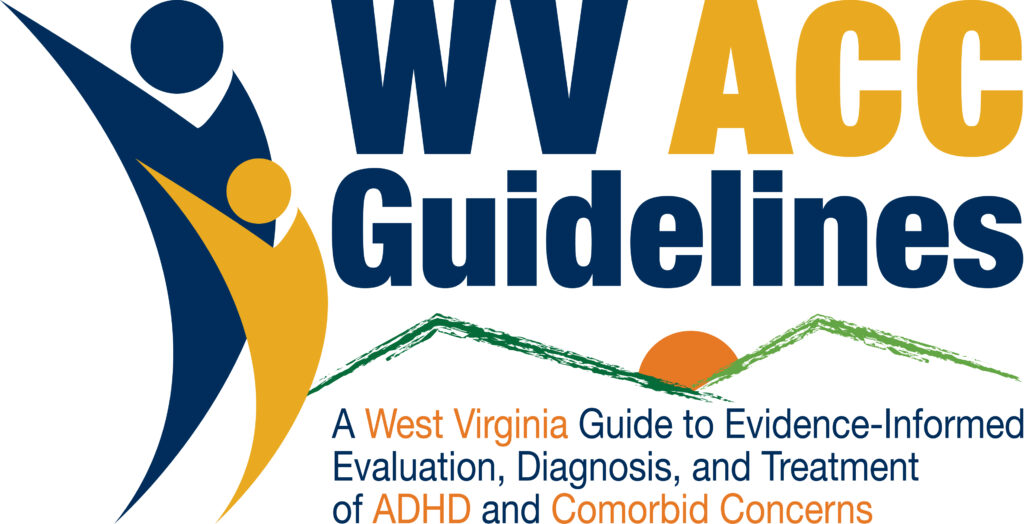EndeavorRx®: A Digital Therapeutic for ADHD

Blog
EndeavorRx®: A Digital Therapeutic for ADHD

As you may have heard, there is now an FDA-approved digital therapeutic option for ADHD. In this blog post, we’re going to define digital therapeutics; discuss the product; identify the patient population who may benefit most from its use; describe how to best use the intervention; and discuss potential benefits, harms, limitations, and costs inherent to the product.
EndeavorRx®: A Digital Therapeutic for ADHD
The Digital Therapeutics Alliance defines a digital therapeutic (DTx) as a “health [software] intended to treat or alleviate a disease, disorder, condition, or injury by generating and delivering a medical intervention that has a demonstrable positive therapeutic impact on a patient’s health.”1 A DTx could thus take the form of a web page, program, or other software application that is intended to help with the management of a disease or condition.
On June 15, 2020, the US Food and Drug Administration permitted the marketing of the game-based DTx medical device EndeavorRx®.2 The product is indicated to improve attention in 8 to 17-year-old patients with inattentive or combined-type ADHD, and the product’s documentation refers to it as a prescription-only “software-as-medical device (SaMD) that resides on the user’s mobile device and can be executed at home.”3 In essence, the device is a smartphone or tablet app that is intended to help children and adolescents with ADHD improve their attention.
At present, the device is available for download on Android and iOS devices.4 The device is a racing or driving game, where the primary inputs are steering, which is done by tilting the hardware that is running the software, and tapping the hardware’s touchscreen.4 The product’s audiovisuals are designed to facilitate engagement, and the product’s “adaptive algorithm” continually adjusts the level of difficulty that the patient encounters with the software,3 in an apparent attempt to attract, retain, and build attention.
The device’s manufacturer states that the device should be used for 25 minutes of training each day, five days a week, for four consecutive weeks.4 Distractions should be minimized while using the device: the manufacturer recommends that the device be used in a quiet room with headphones and without other mobile devices and televisions.4 Patients should know that the device will be challenging to use.4
Benefits of Use
The device has been studied in at least three clinical trials: two studies supporting its use in patients aged 8 to 12 and one study supporting its use in patients aged 13 to 17.3,4 The first study was a randomized, double-blind, digital controlled study in children aged 8 to 12; participants received either the device or a comparator device that used a word search exercise.5 The primary outcome in this study was the change in the Test of Variables of Attention (TOVA) Attention Performance Index (API).5 Briefly, TOVA API is an electronic assessment of the ability to quickly and correctly respond to visual input on a screen over a period of approximately 20 minutes.5 In this study, individuals who used the device had a statistically significant improvement of approximately 1 unit on the TOVA-API at day 28.5 The second study was in a similar population, but the device was used for 1 month, then paused for one month, then used again for one month; of note, this study compared children who were on stimulants to children who were not on stimulants.6 The primary outcome in this study was the ADHD Impairment Rating Scale (IRS), a parent-rated 1 to 7 visual analog scale; in this study, both the stimulant and no-stimulant cohorts showed an improvement of approximately 0.5 to 0.7 points on the IRS by day 28.6 The study of adolescents with ADHD was a single-arm open-label study of individuals aged 13 to 17, with a reported improvement of approximately 2.6 on the TOVA attention comparison score after 4 weeks of treatment.3
Potential Harms, Risks
According to information submitted to the FDA, no serious adverse events were reported in preapproval trials.3 Some 10% of participants in preapproval trials may have experienced a treatment-related adverse event, including decreased frustration tolerance (in approximately 2% of participants) and headache (in approximately 1% of participants).3 Less common adverse events included dizziness, nausea, aggression, and emotional disorder.3 Of note, individuals with photosensitivity or other known sensitivities to playing video games (e.g., motion sickness) were excluded from preapproval studies, as were individuals with a history of non-febrile seizures.3 The manufacturer cautions against use in individuals with photosensitive epilepsy.3,4 The manufacturer recommends pausing use if a patient experiences “emotional reaction, dizziness, nausea, headache, eye-strain, or joint pain” while using the device, and to discontinue use if a patient experiences a seizure.4 The manufacturer recommends using the device “right before bedtime to avoid risk of potential reduction in sleep quality.”4
Limitations of Use and Costs
As discussed previously, the device is approved to improve attention in patients aged 8 to 17 with a diagnosis of inattentive or combined-type ADHD; its possible benefit in other populations, including older patients, younger patients, and patients with predominantly hyperactive-type ADHD, is less clear. Additionally, the device requires a smartphone or other internet-connected touchscreen-based device that the patient can use for approximately 30 minutes a day, multiple days a week. The device is best used in distraction-free environments, and it may not be suitable for patients with low frustration tolerance or a history of property-directed aggression. Further, the device may require a level of hand-eye coordination, and the manufacturer states that the device may not be appropriate for patients with colorblindness or “physical limitations that restrict use of a mobile device.”4
At the time of writing, the cost of EndeavorRx is $99 per 30 days; the cost of treatment may be Flexible Spending Account (FSA)/Health Savings Account (HSA) eligible.7 As this product is a medical device and not a prescription medication, prior authorization and billing may need to occur through the patient’s medical benefits, as if the product were a piece of durable medical equipment.
Conclusions
The EndeavorRx is a software-as-medical-device product that can be downloaded and used on mobile phones and other touchscreen devices. It may help improve symptoms of inattention associated with ADHD. However, it has only been studied in children and adolescents, and its suitability for patients with coordination issues or seizure disorders has not been established. The product is occasionally associated with headaches or frustration. It costs about $100 per month and is intended to be used for about 30 minutes a day, 5 days a week, in a distraction-free setting.
When considering EndeavorRx, patients, caregivers, and prescribers should consider factors including cost, the availability of internet-connected touchscreen devices, and the role that parents would like screen-based devices to play in the patient’s day-to-day life. The device should be considered alongside or as an alternative to other forms of treatment, including behavioral therapy and medication therapy. For your convenience, you can download a printable EndeavorRx® Medical Device Briefing from our expert here.
References
- Digital Therapeutics Alliance. What Is a DTx? Accessed Apr 16, 2025. https://dtxalliance.org/understanding-dtx/what-is-a-dtx/
- S. Food & Drug Administration. Classification Order: De Novo request DEN200026. Published Jun 15, 2020. Accessed Apr 16, 2025. https://www.accessdata.fda.gov/cdrh_docs/pdf20/DEN200026.pdf
- S. Food & Drug Administration. Premarket Notification: 510(k) request K231337. Published Dec 13, 2023. Accessed Apr 16, 2025. https://www.accessdata.fda.gov/cdrh_docs/pdf23/K231337.pdf
- Akili Interactive Labs. EndeavorRx® Instructions for Use 5011 (Commercial), Revision U. Updated Jan 2024. Accessed Apr 16, 2025. https://www.hcpendeavorrx.com/wp-content/uploads/2024/01/EndeavorRx-IFU5011-Commercial-RevU.pdf
- Kollins SH, DeLoss DJ, Cañadas E, et al. A novel digital intervention for actively reducing severity of paediatric ADHD (STARS-ADHD): A randomised controlled trial. Lancet Digit Health. 2020;2(4):e168-e178. doi:10.1016/S2589-7500(20)30017-0
- gov. Software Treatment for Actively Reducing Severity of ADHD in Adolescents (STARS-ADHD-Adolescents) NCT04897074. Updated Aug 14, 2023. Accessed Apr 16, 2025. https://clinicaltrials.gov/study/NCT03649074
- Akili Interactive Labs. How to Prescribe – EndeavorRx®. Accessed Apr 16, 2025. https://www.hcpendeavorrx.com/how-to-prescribe/

About the Author
Ron Carico Jr. is a psychiatric clinical pharmacist who practices with Marshall Health in Huntington, West Virginia. He was awarded a doctorate in pharmacy and a master of public health degree from East Tennessee State University in Johnson City, Tennessee. He then went on to complete a two-year fellowship in medication safety and outcomes research with the Veterans Affairs Center for Medication Safety and Center for Health Equity Research and Promotion. As someone with deep roots in the region, he is passionate about putting his training to work to improve the lives of people in Appalachia. His professional interests include mental health conditions, quality improvement, education, and observational research.
General disclaimer:
This content is not intended to address all possible diagnosis methods, treatments, follow up, drugs or their related contraindications or side effects. Standards of practice change as new data becomes available. Therefore, it is strongly recommended that practitioners independently assess and verify diagnosis, treatments and drugs for each individual patient. The authors of the WV ACC guidelines assume no liability for any aspect of treatment administered by a practitioner with the aid of this publication.
Drug disclaimer:
The authors do not endorse or recommend the use of any particular drug mentioned in this publication. Before prescribing a new drug to a patient, practitioners are advised to check the product information accompanying each drug to ensure it is appropriate for a specific patient and to identify appropriate dosage, contraindications, side effects and drug-to-drug interactions.
Standard of care disclaimer:
This publication is not intended to establish a standard of care applicable to practitioners who treated patients diagnosed with ADHD. “Standard of care” is a legal term, not a medical term, which refers to the degree of care a reasonable practitioner would exercise under the same or similar circumstances. The standard of care is a continuum and does not imply optimal care. Practitioner discretion and clinical judgment are paramount and this publication is only intended to aid practitioners’ judgment, not to serve as a substitute for said judgment.
Navigating a New Diagnosis of ADHD in Your Child’s West Virginia School Districts: A Few Pointers to Help Guide Parents and Guardians: Advice From a School Psychologist

Blog
Navigating a New Diagnosis of ADHD in Your Child’s West Virginia School Districts: A Few Pointers to Help Guide Parents and Guardians: Advice From a School Psychologist

Supporting Clinicians in Guiding Families Through ADHD: Navigating School Resources in West Virginia
As a clinician in West Virginia, you play an instrumental role in assisting families navigating an ADHD diagnosis. Learning that their child now has this diagnosis and may need additional nonpharmacological and pharmacological supports can often leave families overwhelmed with questions like: “What do I do next?”, “How do I ensure my child gets the support they need to succeed?” Beyond providing medical guidance, you can also help direct families to West Virginia schools’ educational and behavioral support systems.
How can you do that? It may seem like a daunting task—understanding the nuances of school interventions, policies, and the proper steps to recommend. To make this process easier, we reached out to Angela Hayes, Director of Psychological Services and Student Interventions in Monongalia County Schools, who provided the key insights clinicians need to assist families during this often difficult time. This document is designed as a resource you can confidently share with families, ensuring they have the information and direction necessary to advocate for their child’s success.
Navigating a New Diagnosis of ADHD in Your Child’s West Virginia School Districts: A Few Pointers to Help Guide Parents and Guardians: Advice From a School Psychologist
(Angela Hayes, Director of Psychological Services and Student Interventions in Monongalia County Schools)
You just received the report from the psychologist, psychiatrist, or pediatrician. Your child’s final diagnosis is ADHD…now what?
To address the myriad of needs of our students in today’s challenging world, schools must develop a personalized learning environment tailored to students’ needs, skills, and interests.
There is a structure of support in West Virginia called the West Virginia Tiered System of Support (WVTSS) that is meant to support all students in the areas of behavior, mental health, and academics. Additionally, this framework aligns specific interventions for students who need assistance that are greater than what is given to all students. This structure exists at all schools and grade levels. The first level is called Universal supports, where each and every student receives a foundation for behavioral expectations and essential life skills that are taught and modeled.
Suppose a student with ADHD struggles with homework organization and forgetfulness (and more than just the occasional forgetfulness that we all experience nowadays!) They may need the support of a check-in/check-out system where the teacher helps to gather materials at the end of the school day and help turn in assignments the next day. With this additional support, a student with ADHD is back on an equal playing field with their peers. This level of support is called Targeted.
The next level of support is Intensive, and school teams are trained to identify and define a student’s needs, gather and analyze data, develop a plan, and implement and monitor the plan. A specific school team that is available in every West Virginia School District is called the Student Assistance Team (SAT).
If there is one thing that you take away from this article, it would be to remember to ask about a SAT meeting at your school when you start to see your child struggle with behavior, academics, or mental health. The team is designed to include professionals who can assist with building appropriate interventions. …………Keep in mind that schools are set up much differently than “back in the day” when we were students. There are many more student services and supports!
You may also want to inquire about a Section 504 plan, which is under the Americans with Disabilities Act. Each school system has a protocol for the 504 referral and assessment to determine eligibility. If eligible, 504 plans can address the specific needs of students with ADHD, such as modifications to the learning environment, accommodations for attention and focus, and assessment accommodations, which can significantly improve academic performance.
Lastly, parent Involvement and home-school communication is crucial to the success of students with ADHD. The combination of behavioral strategies at home and school and pharmaceutical interventions can be a balancing act. Any changes that may occur in a student’s medication regimen can be valuable to the school team. Teachers and staff can help observe any changes, such as hyperactivity, distractibility, or eating habits and report information that you can share with your physician.
While ADHD can present challenges in school, with appropriate support and interventions, students with ADHD can experience positive outcomes and achieve academic success. Research highlights the importance of early identification, tailored interventions, and a supportive school environment to help students thrive. West Virginia Schools have a framework in place to help students who display behaviors and symptoms associated with ADHD.
Supporting Families Through the Process
As a healthcare provider, you can help bridge the gap between medical and educational interventions by guiding families toward available resources. Encouraging parents to initiate SAT meetings, inquire about 504 plans, and maintain open communication with teachers can significantly impact a child’s success. Please feel free to share this document with parents as a helpful reference when navigating their child’s school system. By equipping families with this information, clinicians can ensure that children with ADHD receive the academic and behavioral support they need to thrive. For your convenience, you can download a printable version of the original guidance from our expert here.
About the Author
Angela Hayes, the Director of Psychological Services for Monongalia County Schools for the past five years, previously served as a nationally certified school psychologist in the district since 2003. She takes great pride in the professionals and support staff of Monongalia County Schools, who not only demonstrate expertise in their fields but also show genuine care and concern for the learning and development of all students in Monongalia County schools throughout the years. The Psychological Services department plays a vital role within Student Services, and overseeing its growth and advancement has been one of the highlights of her career. Providing and directing high-quality emotional, behavioral, and academic assessment and intervention remains her passion.
General disclaimer:
This content is not intended to address all possible diagnosis methods, treatments, follow up, drugs or their related contraindications or side effects. Standards of practice change as new data becomes available. Therefore, it is strongly recommended that practitioners independently assess and verify diagnosis, treatments and drugs for each individual patient. The authors of the WV ACC guidelines assume no liability for any aspect of treatment administered by a practitioner with the aid of this publication.
Drug disclaimer:
The authors do not endorse or recommend the use of any particular drug mentioned in this publication. Before prescribing a new drug to a patient, practitioners are advised to check the product information accompanying each drug to ensure it is appropriate for a specific patient and to identify appropriate dosage, contraindications, side effects and drug-to-drug interactions.
Standard of care disclaimer:
This publication is not intended to establish a standard of care applicable to practitioners who treated patients diagnosed with ADHD. “Standard of care” is a legal term, not a medical term, which refers to the degree of care a reasonable practitioner would exercise under the same or similar circumstances. The standard of care is a continuum and does not imply optimal care. Practitioner discretion and clinical judgment are paramount and this publication is only intended to aid practitioners’ judgment, not to serve as a substitute for said judgment.
Improving Therapeutic Outcomes in ADHD Treatment in Appalachia: Culture, A Missing Piece of the Puzzle

Blog
Improving Therapeutic Outcomes in ADHD Treatment in Appalachia: Culture, A Missing Piece of the Puzzle

Cultural Values Influence How People Receive and Process Health Information
Attention-Deficit Hyperactivity Disorder (ADHD) can be a complicated diagnosis to assess and treat. Many different pieces of the puzzle need to be considered to provide successful treatment and outcomes for children and adults diagnosed with ADHD. One puzzle piece that needs more consideration no matter where one practices is providing care based on the culture of that population or group of people. Learning about and considering the cultural values, beliefs, and lifeways of populations to provide culturally congruent care is one area that has not received much attention. Cultural values influence how people receive and process health and healthcare information. Culture is “the learned, shared, and transmitted knowledge of values, beliefs, practices, behaviors, and lifeways of a particular group that are shared intergenerationally and influence thinking, decisions, and actions consciously and unconsciously in certain ways or patterns” (Leininger, 2006).
Awareness and Sensitivity to the Cultural Context of Appalachian Individuals and Families
Understanding and providing culturally appropriate care is especially important in the Appalachian region. Appalachia is a huge region with over 26 million people. The entire state of West Virginia along with parts of 13 other states make up the Appalachian region. It is critical for providers in West Virginia to gain an understanding of the Appalachian population to have successful communication and interactions which will improve outcomes.
“Awareness of and sensitivity to the cultural context of Appalachian individuals and families should take priority over assessments and interventions guided by professional practices that are customary for mental health professionals from the mainstream culture. How problems are assessed and formulated should be based upon the “insider’s view,” using language, values, and assumptions that belong to the local culture to the extent possible (American Psychiatric Association, 2025).”
Distrust in Appalachia
Appalachia has a long and complicated history of exploitation by outsiders that has led to much distrust and fear when it comes to interacting with people who are not from the region. No matter how caring and well-meaning a provider may be who is not from Appalachia, many barriers that are in place consciously and unconsciously can affect the communication and interactions between the provider and their clients and families. For many generations, well-meaning and not so well-meaning people have come into the Appalachian region with a measure of superiority and attempted to fix problems in Appalachia without seeking the input of the people who live in the region. When providers interact in a hierarchical manner and “tell” Appalachians what they need to do, it can create a lot of resistance. One of the negative results of this is that Appalachians tend to wait much later to seek professional help for problems. Unfortunately, this can result in worse symptoms and the need for more intensive treatment once they find themselves at the healthcare provider’s office.
An important cultural factor that is helpful to understand is that Appalachian people tend to be much more relational and desire relationships when interacting with others. Providers addressing ADHD would have much more success in their first encounter with an Appalachian patient and family if they first asked a few non-threatening questions to get to know the family, their likes, dislikes, etc. If a provider moves straight into clinical questions this will further contribute to this barrier of distrust. Providers really need to keep the focus of building trust in the forefront of all their interactions with Appalachians.
Implicit Bias
Sadly, the negative stereotypes that surround Appalachia are quite numerous and widespread. Written literature over the years, as well as television shows and other media have exaggerated some of the negative aspects of Appalachian values and lifeways. Providers who move to Appalachia from other locations would be well served by assessing their own biases and thought processes and learning as much as they can about the Appalachian population to help dispel these stereotypes. These negative stereotypes can have profound impact on interactions between providers, patients and their families.
Importance of Family in Appalachia
From the early days of the settling of the Appalachian region, the family has remained extremely important. Many large extended families remain close to one another and provide much help with child raising. In the Appalachian family, there is a lot of emphasis on keeping problems inside the family and not “sharing dirty laundry outside of the family.” This lack of openness may contribute to difficulty in providers being able to fully assess individuals for ADHD. Unfortunately, providers may misinterpret this closed interaction and hesitancy by the family to share information, as evidence that responsible family members are not concerned about the child. When this misunderstanding occurs, it may be necessary to work harder at trust-building to improve trust and communication between the provider and family. This Appalachian value of closeness and reliance on the extended family may create problems with family members acceptance of an ADHD diagnosis. The family may be hearing conflicting advice from other family members that encourage the parents or caregivers to just discipline the child more or to “pray about it and have more faith.”
Conclusion: Culturally Congruent Care Improves Outcomes
Although people in Appalachia may be initially resistant to sharing information with outsiders, once trust is built, it usually remains and is helpful for building trust with other extended family members. Evidenced based research has shown that providing culturally congruent care contributes to many positive outcomes such as improved adherence to treatment plans, improved appointment attendance, and increased provider and client satisfaction among other positive results which all result in improved outcomes. Learning about and utilizing Appalachian culturally relevant approaches and strategies is a huge puzzle piece that can and will contribute to improved outcomes in the treatment of ADHD. It is vitally important to remember that “Appalachian people have their own way of looking at the world & acting in it. Those who hope to work successfully with them must learn to understand & appreciate these cultural differences” (Keefe, 2005).
References
American Psychiatric Association (2025). Retrieved February 10, 2025 from https://www.psychiatry.org/psychiatrists/diversity/education/best-practice-highlights/working-with-appalachian-patients
Appalachian Regional Commission. (2017). Health disparities in Appalachia. Appalachian Regional Commission https://www.arc.gov/report/health-disparities-in-appalachia/
Betancourt, J. R., Corbett, J., & Bondaryk, M. R. (2014). Addressing disparities and achieving equity: Cultural competence, ethics, and health-care transformation. Chest, 45(1),143–148. https://doi.org/10.1378/chest.13-0634
Edwards, G. T., Asbury, J. A., & Cox, R. L. (Eds.). (2006). A handbook to Appalachia: an introduction to the region (1st ed). Knoxville: University of Tennessee Press.
Keefe, S. E. (2005). Appalachian cultural competency: a guide for medical, mental health, and social service professionals. Knoxville: University of Tennessee Press.
Leininger, M.M., & McFarland, M. R. (2006) Culture Care Diversity and Universality: A Worldwide Nursing Theory. (2nd ed). Jones & Bartlett Publishers, Inc.
Tripp-Reimer, T., & Friedl, M. (1977). Symposium on cultural and biological diversity and health care. Appalachians: a neglected minority. Nursing Clinics of North America, 12, 41–54.
Tripp-Reimer, T. (1982). Barriers to Health Care: Variations in Interpretation of Appalachian Client Behavior by Appalachian and Non-Appalachian Health Professionals. Western Journal of Nursing Research, 4(2), 179.

About the Author
Robyn Seamon
Robyn Seamon is a Certified Transcultural Nurse with an Advanced Certificate in Cultural Competence. Robyn is the Owner of Appalachian Healthcare Training & Consulting and regularly provides professional development workshops and consultation services. Robyn is passionate about utilizing her transcultural knowledge to continue to see improvement in health equity in marginalized, rural populations. As a Registered Nurse for over 35 years, she has had many diverse experiences, including hospital nursing, public health department, home health and hospice, a startup clinic at a homeless shelter, and various volunteer experiences.
General disclaimer:
This content is not intended to address all possible diagnosis methods, treatments, follow up, drugs or their related contraindications or side effects. Standards of practice change as new data becomes available. Therefore, it is strongly recommended that practitioners independently assess and verify diagnosis, treatments and drugs for each individual patient. The authors of the WV ACC guidelines assume no liability for any aspect of treatment administered by a practitioner with the aid of this publication.
Drug disclaimer:
The authors do not endorse or recommend the use of any particular drug mentioned in this publication. Before prescribing a new drug to a patient, practitioners are advised to check the product information accompanying each drug to ensure it is appropriate for a specific patient and to identify appropriate dosage, contraindications, side effects and drug-to-drug interactions.
Standard of care disclaimer:
This publication is not intended to establish a standard of care applicable to practitioners who treated patients diagnosed with ADHD. “Standard of care” is a legal term, not a medical term, which refers to the degree of care a reasonable practitioner would exercise under the same or similar circumstances. The standard of care is a continuum and does not imply optimal care. Practitioner discretion and clinical judgment are paramount and this publication is only intended to aid practitioners’ judgment, not to serve as a substitute for said judgment.
The ADHD Medication Shortage Explained

Blog
The ADHD Medication Shortage Explained

Have your patients been having difficulty getting their ADHD meds from the pharmacy in the past few years? Has it been difficult to tell patients you are uncertain when their meds will arrive?
As healthcare clinicians, we are all far too familiar with the ADHD medication shortage that our patients have been affected by for the last few years. The frustrations are shared across the board.
I wanted to explain this issue, some of the reasons why it is occurring, and what you can do to help your patients in the meantime.
The Role of the DEA and Aggregate Production Quotas (APQs)
To begin our discussion, it is imperative to understand the role of the DEA and the Aggregate Production Quota.
In collaboration with the Food and Drug Administration (FDA), the Drug Enforcement Agency (DEA) sets an annual production limit called the Aggregate Production Quota (APQ) for all Schedule I and II substances. The APQ indicates how much of a particular active ingredient can be produced within a calendar year. The DEA determines the APQ for a particular ingredient by gathering data from numerous sources to predict the expected demand for the products that utilize said ingredient and to ensure there is not much excess product available for misuse. Once the APQ for an ingredient is determined, the DEA allocates portions of this quota to individual manufacturers based on their market share and production capabilities. This allocation limits the amount of the ingredient a single manufacturer can produce. These production caps are intended to prevent potential misuse and are rigid and inflexible to adapt to patient demands. The DEA establishes annual production caps for each pharmaceutical company based on predictions made nearly 2 years in advance.1
Unfortunately, the APQ and its allocations do not always reflect market demands. Certain manufacturers who can produce well beyond their allocation are capped once they meet their limit. In contrast, others cannot produce enough to meet their allocation, or there simply may not be a demand for that specific product due to cost, dosage form, etc. —and the other manufacturers cannot make up for it. This discrepancy between allocated APQ and actual demand may lead to a surplus of branded medications available for patients but not enough of the more cost-friendly generic options, leading to drug shortages of those products with higher demand. As a result, patients cannot receive their prescriptions from pharmacies due to inventory issues.
This trend has been observed among several stimulant agents since 2022, when a shortage of the immediate-release formulation of amphetamine mixed salts, which includes the brand-name Adderall®, was first identified.2,3 These shortages prevent patients from accessing their prescribed medications, forcing them to go without treatment or undergo unnecessary and stressful medication changes. At this point, many patients and providers have felt the impact of this shortage first-hand for nearly three years. However, there is now some hope for change in the near future.
How is the APQ for controlled substances determined?
The FDA determines an APQ for a particular ingredient using several factors and measures to estimate demand.4
- Assessment of medical need: The DEA evaluates the medical need for the controlled substance based on prescription data and trends in usage. This assessment takes into account the prevalence of conditions for which a controlled substance is prescribed, in this case – the prevalence of ADHD for stimulant agents.
- Estimating demand: The DEA gathers information on current and projected demand for the substance, which includes historical data on prescribing patterns, potential misuse rates, and factors that may impact consumption.
- Review of manufacturing capacity: The DEA considers pharmaceutical companies’ manufacturing capabilities and their ability to produce the controlled substance in sufficient quantities to meet the assessed demand.
Based on all of this information, the DEA sets an annual aggregate production quota that dictates how much of the controlled substance manufacturers can produce for that year. The quota is then monitored, and adjustments may be made in subsequent years based on changes in medical needs or patterns of abuse.
By following this process, the DEA aims to balance the legitimate medical needs for stimulant medications while attempting to minimize the potential for misuse and diversion.
Increased Demand for Stimulants
Stimulant prescriptions within the United States have been increasing each year since 2012. From 2012 to 2022, overall dispensing of stimulants in the U.S. increased by 57.9%.5,6 This increase in prescribing has contributed to the APQ not being high enough to meet the demands of the patient population, as the APQs are determined years in advance. Unforeseen circumstances have also contributed to the increased prevalence of stimulant use, including the rise of telehealth services5 expanding access to clinicians for patients who might not have otherwise seen a clinician and the COVID-19 pandemic which led to a surge in prescription stimulant medications dispensed for ADHD amongst young adults and women.7
Impact in WV
As a Clinical Educator, I have seen firsthand the impact of this shortage in West Virginia and have spoken with clinicians and pharmacists about how it has affected their patients. Every single pharmacy I have stepped into to discuss safer stimulant use has told me that they have felt the impact of the shortage and that many of their patients were affected. Patients were made to go weeks without receiving their medications and were subject to changes in their treatment plan despite having found the right agents and dosing that worked best to control their symptoms. In addition to these difficulties, many of the available alternatives were often more expensive than their original regimen – adding an extra layer of financial burden to patients already struggling with the fact they had to switch medications for reasons that have nothing to do with their condition.
Changes for the Upcoming year:
As a result of public outreach and re-evaluation of demand, the DEA has adjusted the APQ for both lisdexamfetamine dimesylate, the active ingredient in Vyvanse®, and dextroamphetamine, which is used for conversion into lisdexamfetamine.
To account for domestic and foreign market demands, the DEA has approved a 23.5%8 adjustment increase in the quota for lisdexamfetamine dimesylate – bringing its APQ to 32,736,000 grams from its original 26,500,000. A 15.6% increase was granted for dextroamphetamine (for conversion) – bringing its APQ to 23,688,235 grams from its original 20,000,000 grams.8
This quantity is to be divided and allocated to manufacturers based on their market share and production capabilities. Manufacturers are able to submit for adjustment of their allocation to be reviewed on a semi-annual basis. This comes as a change from the previous quarterly review system, which exacerbated manufacturing difficulties for pharmaceutical manufacturers. The quarterly review system made it more difficult for drug manufacturers to predict the next quarter’s manufacturing plan, and removed the flexibility offered by annual allocation. In addition to this, manufacturers were given little notice of their allocation before the next quarter begins. For example, manufacturers were alerted on December 29, 2023, of their 2024 Quarter One APQ, which began on January 1, 2024. Recognizing these issues, the DEA has again altered the process for quota allocation, shifting it from quarterly to semi-annually. Representatives of the Committee on Oversight and Accountability assess the change to represent a welcome shift, though it highlights the ongoing uncertainty for manufacturers which is likely to extend shortage concerns.9
With these changes put in place, increased availability of medications that utilize these active ingredients is hoped to be observed for our patients.
How Can You Help?
In the instance that a patient is unable to receive their ADHD medication due to limited inventory as a result of these shortages, there are a few things one can do as a clinician to help.
Suppose a medication switch to an available agent needs to be done. In that case, the stimulant conversion aid in the WV ACC Guidelines can be utilized to identify a comparable dose to the one the patient had previously received. Several resources can also be utilized to identify any potential side effects or nuances in care that were not present with their original treatment option, such as the ADHD medication resource and the ADHD medication side effect and monitoring/management aid. The FDA also keeps a list of medications currently identified to be in a state of shortage and has information regarding when the availability of certain NDCs is estimated to return.
Our duty as clinicians is to do everything we can to ensure our patients get the most appropriate treatment, regardless of any external struggles. We hope that with these resources and the increase in APQ for these active ingredients, you and your patients do not feel the impact of the shortage as strongly as you have these last few years.
References:
- Grossi G. US ADHD Stimulant Shortage Highlights Growing Challenges in Adult Treatment. AJMC. November 27, 2024. https://www.ajmc.com/view/us-adhd-stimulant-shortage-highlights-growing-challenges-in-adult-treatment
- U.S. Food & Drug Administration. FDA Announces Shortage of Adderall. FDA. Published online October 12, 2022. https://www.fda.gov/drugs/drug-safety-and-availability/fda-announces-shortage-adderall
- Dodson, W., M.D., & LF-APA. (2024, April 26). The DEA’s manufactured crisis. ADDitude. https://www.additudemag.com/adderall-shortage-dea-stimulants-adhd-medication/
- 21 CFR 1303.13 — Adjustments of aggregate production quotas. Ecfr.gov. Published 2015. Accessed February 13, 2025. https://www.ecfr.gov/current/title-21/chapter-II/part-1303/subject-group-ECFR2b8c25396f0c33e/section-1303.13#p-1303.13(b)
- Hilas O. Rising Trends in Stimulant Prescriptions. Uspharmacist.com. Published January 15, 2025. Accessed February 6, 2025. https://www.uspharmacist.com/article/rising-trends-in-stimulant-prescriptions#:~:text=From%202012%20to%202022%2C%20there,to%200.9%20million%2C%20respectively).
- IQVIA Government Solutions, Inc. Stimulant Prescription Trends in the United States.; 2012. https://www.deadiversion.usdoj.gov/drug_chem_info/stimulants/IQVIA_Report_on_Stimulant_Trends_from_2012-2022.pdf
- Chai G, Xu J, Goyal S, et al. Trends in Incident Prescriptions for Behavioral Health Medications in the US, 2018-2022. JAMA Psychiatry. Published online 2018. https://doi.org/10.1001/jamapsychiatry.2023.5045
- Drug Enforcement Administration. Adjustment to the Aggregate Production Quota for Lisdexamfetamine and d-Amphetamine (For conversion) for 2024. (2024, September 5). Federal Register. https://www.federalregister.gov/documents/2024/09/05/2024-20114/adjustment-to-the-aggregate-production-quota-for-lisdexamfetamine-and-d-amphetamine-for-conversion
- James Comer and Lisa McClain to Anne Millgram, May 13, 2024, Correspondence from Chairman of the Committee on Oversight and Accountability (Kentucky)/Chairwoman of the Subcommittee on Health Care and Financial Services and Administrator of the Drug Enforcement Administration, Letter-to-DEA-drug-shortages.pdf
Other Resources Used:
- Mole B. ADHD med shortages push DEA to up drug allotment by 23.5%. Ars Technica. Published September 6, 2024. ADHD med shortages push DEA to up drug allotment by 23.5% – Ars Technica
- Kritz F. The Adderall Shortage: What to Do if You Can’t Get Your Meds. EverydayHealth.com. Published June 23, 2023. https://www.everydayhealth.com/adhd/the-adderall-shortage-why-its-still-happening-and-what-to-do/
- Tin A. Why is there an ADHD medication shortage in 2024? What’s making generics of Vyvanse, Adderall and more so scarce – CBS News. https://www.cbsnews.com/news/adhd-medication-shortage-cause/
- Danielson ML, Bohm MK, Newsome K, et al. Trends in Stimulant Prescription Fills Among Commercially Insured Children and Adults — United States, 2016–2021. MMWR Morbidity and Mortality Weekly Report. 2023;72(13):327-332. doi: https://www.cdc.gov/mmwr/volumes/72/wr/mm7213a1.htm
- Wachsman MW. Vyvanse Shortage Update: DEA OKs Expanded Production of the ADHD Medication. ADDitude. Published September 12, 2024. https://www.additudemag.com/vyvanse-shortage-lisdexamfetamine-dimesylate-adhd-medication/
- Billing Code 4410-09-P DEPARTMENT of JUSTICE Drug Enforcement Administration Adjustment to the Aggregate Production Quota for Lisdexamfetamine and D- Amphetamine (for Conversion) for 2024. Accessed February 6, 2025. https://public-inspection.federalregister.gov/2024-20114.pdf
Letters referenced:
1. Anne Milgram to Americans, November 1, 2023, Correspondence from the Office of the Administrator of the U.S. Department of Justice and the Drug Enforcement Administration, Quota-Shortages Letter.pdf

About the Author
Nicholas Kotov, PharmD
Nicholas Kotov graduated from the University of Toledo College of Pharmacy in 2023 with his PharmD. Nick is very excited to come to West Virginia and to serve the Eastern Region as your liaison. Outside of work, Nick enjoys hiking, running, and playing the guitar and drums.
General disclaimer:
This content is not intended to address all possible diagnosis methods, treatments, follow up, drugs or their related contraindications or side effects. Standards of practice change as new data becomes available. Therefore, it is strongly recommended that practitioners independently assess and verify diagnosis, treatments and drugs for each individual patient. The authors of the WV ACC guidelines assume no liability for any aspect of treatment administered by a practitioner with the aid of this publication.
Drug disclaimer:
The authors do not endorse or recommend the use of any particular drug mentioned in this publication. Before prescribing a new drug to a patient, practitioners are advised to check the product information accompanying each drug to ensure it is appropriate for a specific patient and to identify appropriate dosage, contraindications, side effects and drug-to-drug interactions.
Standard of care disclaimer:
This publication is not intended to establish a standard of care applicable to practitioners who treated patients diagnosed with ADHD. “Standard of care” is a legal term, not a medical term, which refers to the degree of care a reasonable practitioner would exercise under the same or similar circumstances. The standard of care is a continuum and does not imply optimal care. Practitioner discretion and clinical judgment are paramount and this publication is only intended to aid practitioners’ judgment, not to serve as a substitute for said judgment.
Prescribing with Care: Risk Reduction Strategies in ADHD Treatment

Blog
Prescribing with Care: Risk Reduction Strategies in ADHD Treatment

Oftentimes, Attention-deficit/hyperactivity disorder (ADHD) is treated with prescription stimulants. While effective in the treatment of ADHD, stimulants carry a risk for misuse and require additional monitoring for safe prescribing practices. To ensure appropriate use of these medications, it is vital that healthcare providers implement comprehensive monitoring plans to promote both safe and effective prescribing practices. Available monitoring strategies utilized to reduce potential stimulant misuse include risk screenings, urine drug testing, Prescription Drug Monitoring Programs (PDMPs), and patient-provider agreements (PPAs). By utilizing all or a combination of these strategies, prescribers can reduce the risk associated with prescription stimulant use.
Screening for Substance Use in ADHD Treatment
Currently, there are no validated screening tools specifically designed to identify prescription stimulant misuse. However, various risk screenings are available to help clinicians assess the risk of substance misuse across age groups, including adolescents and adults. These tools, recommended by the American Academy of Pediatrics (AAP) and the American Academy of Family Physicians (AAFP), assist in identifying individuals who may be at higher risk for misusing prescription stimulants (AAFP, 2019; Huang et al., 2020; Wolraich et al., 2019). For adolescents, universal screening for substance use is recommended by the AAP for those aged 12 to 17 in pediatric primary care settings (Wolraich et al., 2019). Screenings continue to be crucial throughout adulthood, with an emphasis on young adults (18 to 25 years), as they exhibit the highest rates of prescription stimulant misuse (AAFP, 2019; Huang et al., 2020). Clinicians should familiarize themselves with the range of screening and assessment tools. Utilizing said screening tools helps clinicians identify potential risks for substance use, thereby allowing for the development of personalized treatment plans. There are several validated tools available for substance use screening in adolescents and adults. For adolescents, commonly used tools include the Brief Screener for Tobacco, Alcohol, and other Drugs (BSTAD) and the CRAFFT® (Car, Relax, Alone, Forget, Friends, Trouble) screening tool. In adults, widely used screening tools include the Drug Abuse Screen Test (DAST-10), the Tobacco, Alcohol, Prescription Medication, and Other Substances (TAPS) tool, the Alcohol, Smoking, and Substance Involvement Screening Test (ASSIST), and the Global Appraisal of Individual Needs Short-Screener (GAIN-SS). After a positive screening, a brief intervention should be provided, and then either treatment or a referral for treatment should be initiated if the patient is deemed moderate to high risk for substance use.
Click here for a summary of various screening tools for their validated age group and substances to screen.
Toxicology Testing in ADHD Treatment
In addition to the implementation of screening tools, toxicology testing is an important aspect of treatment plans when prescribing controlled substances, including stimulants for ADHD. Urine drug testing can be a useful tool to monitor adherence to prescribed medications and detect illicit substance use that may increase the risk of adverse effects or overdose (AAFP, 2019). The WVACC guidelines recommend urine drug screening/testing at the clinician’s discretion when adults are presenting with signs of misuse. Others recommend that a baseline urine drug test be performed when initiating stimulant treatment for ADHD, with follow-up tests at least annually or more often if concerns arise, such as early refill requests or missed appointments (Huang et al., 2020). For adolescents, although more evidence-based studies are needed, urine drug testing remains a tool that can help clinicians identify and reduce illicit substance use when the clinician deems it necessary. It is important for healthcare clinicians to be trained appropriately in interpreting testing results. False positives or negatives can occur with drug screenings, so confirmatory testing should be utilized to confirm results (Levy et al., 2014).
Read more about Urine Drug Screening and Testing here.
Prescription Drug Monitoring Programs (PDMP)
PDMPs are another vital resource available in nearly every state. For West Virginia, the Controlled Substance Automated Prescription Program (CSAPP) is utilized. This electronic database allows prescribers and dispensers to report and track controlled substance prescriptions. By accessing the PDMP with every prescription, clinicians can ensure that patients are not obtaining prescriptions for stimulants from multiple sources (prescribers and/or pharmacies), a practice that can lead to misuse or diversion. All clinicians or practitioners who prescribe or dispense scheduled medication shall register with the West Virginia Controlled Substance Monitoring Program (CSMP) and maintain online or other electronic access to the program database. Not only must they be registered, but they must also check the CSMP anytime a schedule II, opioid, or benzodiazepine is prescribed to a patient that is not terminally ill and at least yearly thereafter if therapy is continued. It is considered “best practice” to check the CSMP when a new prescription is provided or at least every 3 months.
Read more about Prescription Drug Monitoring Programs here.
Patient-Provider Agreements (PPA) for Prescription Stimulant Therapy
To implement additional diligent prescribing practices, a PPA is recommended when initiating treatment with prescription stimulants. This written agreement outlines the roles and responsibilities of the clinician and patient (or their caregiver) and serves as a safety measure to promote responsible medication use. It includes an understanding of the risks and benefits of stimulant medications, consent for urine drug testing, and the commitment to regular follow-up visits with the clinician. These agreements help ensure that patients and their families are fully informed about the risks and expectations associated with medication use. Additionally, PPA’s can establish clear guidance for the clinician to follow if misuse is suspected or if the benefits of continued stimulant use no longer outweigh the risks (Substance Abuse and Mental Health Administration, 2021; Huang et al., 2020).
Read more Patient Provider Agreements here.
Shared Decision Making with Initiating Therapy
The decision to initiate treatment with a controlled substance, such as a prescription stimulant, should always be a shared decision-making process. By utilizing risk screenings, drug testing, PDMPs, and PPA, healthcare providers can take a comprehensive approach to managing ADHD treatment while minimizing the potential harm. These strategies help clinicians make informed decisions, protect their patients, and foster a collaborative approach that focuses on the therapeutic benefits and the responsible use of medication.
To read more about risk reduction strategies, click here to go to the Risk Reduction Strategy section in the WVACC guidelines.
Contact Us
We value your feedback and are here to support you. If you have any questions, comments, or concerns regarding ADHD or our blog content, please get in touch with us. Your insights are essential, and we aim to provide our readers with the most helpful and relevant information.
Follow this link to schedule a session with us: https://wvadhd.org/schedule-appointment/
Email Us: [email protected]
Phone: (304) 293-2317
Follow Us on Social Media: https://www.linkedin.com/company/rational-drug-therapy-program-rdtp-academic-detailing
Resources
- American Academy of Pediatrics Clinical Practice Guidelines for the Diagnosis, Evaluation, and Treatment of Attention-Deficit/Hyperactivity Disorder in Children and Adolescents: https://publications.aap.org/pediatrics/article/144/4/e20192528/81590/Clinical-Practice-Guideline-for-the-Diagnosis?autologincheck=redirected
- American Psychiatric Association: https://www.psychiatry.org/patients-families/adhd/what-is-adhd
- American Psychological Association: https://effectivechildtherapy.org/concerns-symptoms-disorders/disorders/inattention-and-hyperactivity-adhd
- Children and Adults with Attention-Deficit/Hyperactivity Disorder (CHADD): CHADD.org
- Info About Kids: https://infoaboutkids.org/emotions/common-emotional-conditions/adhd-behavior-problems
- West Virginia Guide to Evidence-Informed Evaluation, Diagnosis, and Treatment of ADHD and Comorbid Concerns: WVADHD.org
References:
- American Academy of Family Physicians. (2019). Attention-deficit/hyperactivity disorder (ADHD) in adults. American Family Physician. Retrieved from https://www.aafp.org/family-physician/patient-care/prevention-wellness/emotional-wellbeing/adhd-toolkit/treatment-and-management.html[1](https://www.aafp.org/family-physician/patient-care/prevention-wellness/emotional-wellbeing/adhd-toolkit/treatment-and-management.html)
- Huang, R., Ridout, S. J., Harris, B., Ridout, K. K., & Raja, K. (2020). Pharmacist Medication Management of Adults with Attention Deficit: An Alternative Clinical Structure. The Permanente journal, 24, 19.122.
- Levy, S., Siqueira, L. M., Committee on Substance Abuse, Ammerman, S. D., Gonzalez, P. K., Ryan, S. A., Siqueira, L. M., & Smith, V. C. (2014). Testing for drugs of abuse in children and adolescents. Pediatrics, 133(6), e1798–e1807
- Substance Abuse and Mental Health Services Administration. (2021). Prescription stimulant misuse and prevention among youth and young adults. Retrieved from https://store.samhsa.gov/sites/default/files/SAMHSA_Digital_Download/PEP21-06-01-003.pdf
- West Virginia University School of Pharmacy’s Rational Drug Therapy Program with Expert Panel. (2024). A West Virginia Guide to Evidence-Informed Evaluation, Diagnosis, and Treatment of Attention-Deficit/Hyperactivity Disorder (ADHD) and Comborbid Concerns. https://wvadhd.org/
- Wolraich, M. L., Hagan, J. F., Allan, C., Chan, E., Davison, D., Earls, M., Evans, S. W., Flinn, S. K., Froehlich, T., Frost, J., Holbrook, J. R., Lehmann, C. U., Lessin, H. R., Okechukwu, K., Pierce, K. L., Winner, J. D., Zurhellen, W., & SUBCOMMITTEE ON CHILDREN AND ADOLESCENTS WITH ATTENTIONDEFICIT/HYPERACTIVE DISORDER. (2019). Clinical practice guideline for the diagnosis, evaluation, and treatment of attention-deficit/hyperactivity disorder in children and adolescents. Pediatrics, 144(4), e20192528. https://doi.org/10.1542/peds.2019-2528

About the Author
Kaleb Thompson is a graduate of Marshall University where he earned a bachelor’s degree in health science and a PharmD. He is a Logan, West Virginia native and is eager to serve as your liaison for the Western Region of West Virginia. In his free time, his favorite activities are watching the Steelers, following Mountaineer athletics, golfing, and traveling with his wife, particularly to their favorite destination of Hilton Head Island.
General disclaimer:
This content is not intended to address all possible diagnosis methods, treatments, follow up, drugs or their related contraindications or side effects. Standards of practice change as new data becomes available. Therefore, it is strongly recommended that practitioners independently assess and verify diagnosis, treatments and drugs for each individual patient. The authors of the WV ACC guidelines assume no liability for any aspect of treatment administered by a practitioner with the aid of this publication.
Drug disclaimer:
The authors do not endorse or recommend the use of any particular drug mentioned in this publication. Before prescribing a new drug to a patient, practitioners are advised to check the product information accompanying each drug to ensure it is appropriate for a specific patient and to identify appropriate dosage, contraindications, side effects and drug-to-drug interactions.
Standard of care disclaimer:
This publication is not intended to establish a standard of care applicable to practitioners who treated patients diagnosed with ADHD. “Standard of care” is a legal term, not a medical term, which refers to the degree of care a reasonable practitioner would exercise under the same or similar circumstances. The standard of care is a continuum and does not imply optimal care. Practitioner discretion and clinical judgment are paramount and this publication is only intended to aid practitioners’ judgment, not to serve as a substitute for said judgment.
Framing Our Approach: A Guide to ADHD Medications

Blog
Framing Our Approach: A Guide to ADHD Medications

Do you ever feel overwhelmed by the sheer amount of medication options for ADHD? Is brand X really better than that generic you’ve been using forever? Listen, I get it. The ADHD medication landscape is constantly evolving, filled with products that have specific niches. However, I don’t view this as a negative; it allows us to tailor treatments to meet patient-specific needs like never before. But sometimes, we need to take things that appear complex on the surface and reduce them to the essentials. That’s what I want to do here: break down the medication essentials of ADHD.
It reminds me of a professor I had in pharmacy school who often referenced a “toolbox.” We might have a dozen different options for a tool, and many of them can solve the same problem, but at the end of the day, they’re all just variations of the same basic tools. In ADHD treatment, while we have a multitude of medications with different names and formulations, the core goal remains the same: to find the right fit for each patient’s needs.
Laying the Foundation: An Overview of ADHD Medication Classes
With so many ADHD medication options available, let’s dive into a few key classes, their effectiveness, and how they fit within the WVACC Guidelines found at wvadhd.org/guidelines/. Before starting any ADHD medication, however, the most important step is ensuring that the patient is an appropriate candidate for the treatment. Careful assessment of their medical history, comorbidities, and potential contraindications should guide the decision to initiate therapy. For more information, see our section in the WVACC Guidelines: Prior to Starting Medication, found at this link: https://wvadhd.org/guidelines/#priortostartingmedication%E2%80%8C.
- Stimulants: As a first-line pharmacological therapy for patients 6 years of age and older, in our guidelines and many others, stimulants are effective in 75-80% of children with ADHD (Briars & Todd, 2016).
- Classes: Methylphenidates (e.g., Ritalin®, Concerta®) and Amphetamines (e.g., Adderall®, Vyvanse®).
- Mechanism of Action: Stimulants block the reuptake of norepinephrine and dopamine in the synaptic cleft. By increasing the levels of these neurotransmitters, stimulants improve patients’ ability to focus and reduce hyperactivity.
- Key Differences: Amphetamines also promote the release of norepinephrine and dopamine into the synaptic cleft, which can enhance their effectiveness but may also lead to more side effects. Due to this difference, methylphenidates are recommended by the American Academy of Pediatrics if used in children under 6 years of age for their comparatively better side effect profile.
- Clinical Pearl: Approximately 40% of children will respond to either methylphenidate or amphetamines, while 40% may respond to one but not the other. Additionally, 20-35% may not respond to either class of medication (Childress & Sallee, 2014; Wolraich et al., 2019).
- Most Common Adverse Effects: Appetite suppression and weight loss, insomnia, increased heart rate and blood pressure, anxiety, irritability, headaches, dry mouth
- Black Box Warnings: Stimulants have a black box warning for risks of misuse, dependence, and serious heart events. These medications may increase the risks of sudden death, heart attack, or stroke, particularly in patients with heart conditions, so careful assessment and monitoring are essential.
- Non Stimulants:
- Option 1: Selective Norepinephrine Re-uptake Inhibitors; these medications are also first-line in our guidelines for patients who are deemed not to be candidates for stimulants and adults as they have demonstrated effectiveness in reducing ADHD symptoms. The most commonly used products are atomoxetine (Strattera®) and viloxazine (Qelbree®)
- Mechanism of Action: Selective inhibition of norepinephrine reuptake indirectly increases the concentration of norepinephrine in the synapse
- Key differences: While atomoxetine, with an effect size of up to 0.7, is generally less effective than stimulants in treating core ADHD symptoms, it has been consistently shown to outperform placebo (Wolraich et al., 2019). A recent meta-analysis confirmed that chronic use of methylphenidate and atomoxetine improves executive functions, including attention, inhibition, and reaction time, with comparable effects, though only methylphenidate showed benefits for working memory (Isfandnia et al., 2024).
- Clinical Pearl: It can take up to 4 to 8 weeks of consistent use to reach the full therapeutic effect. Atomoxetine is metabolized by CYP 2D6, so be cautious around some classes, such as SSRIs, TCAs, and SNRIs, which have some medications that, in combination with atomoxetine, can lead to an increase in adverse effects and the need to alter dosing for some patients. Viloxazine inhibits CYP1A2, which is the enzyme that metabolizes caffeine, so it is important to counsel patients on potentially reducing their caffeine intake if they are experiencing issues such as insomnia, gastrointestinal upset, and increased blood pressure.
- Most Common Adverse Effects: Gastrointestinal issues such as nausea, vomiting, and stomach pain, decreased appetite and weight loss, fatigue and drowsiness, mood changes, dry mouth
- Black box warning: Atomoxetine (Strattera®) and viloxazine (Qelbree®) carry black box warnings for an increased risk of suicidal thoughts in children and adolescents, particularly in the first few months or after dose changes.
- Option 2: Alpha-2-agonists are another study-tested class that shows improvements in ADHD symptom reduction. Clonidine extended-release (Kapvay™) and guanfacine extended-release (Intuniv®) are the FDA-approved treatment options for pediatric patients with ADHD that fall within this class.
- Mechanism of Action: This is not definitive, but the hypothesis is that they mimic the effects of norepinephrine on the alpha2-adrenoreceptor in the prefrontal cortex. In other words, the molecule acts as norepinephrine and stimulates the prefrontal cortex, a brain region affected by ADHD, resulting in improved symptoms.
- Clinical Pearl: These medications are FDA-approved for use in 6-17-year-old patients, and literature also supports use in adults. They are often useful as an adjunct therapy and can take 2 to 4 weeks to see the maximum benefit. Long-acting formulations are recommended due to a more favorable side effect profile, as they do not have the “peaks and troughs” we see in immediate-release products.
- Most Common Adverse Effects: drowsiness and fatigue, low blood pressure and dizziness, bradycardia, dry mouth, constipation
Equipping Your Team: The Importance of Education
Patient education is the cornerstone of a successful treatment plan, and setting realistic expectations for medication outcomes is essential. While ADHD medications can be highly effective in managing symptoms, it’s important to communicate that they do not ‘cure’ ADHD or eliminate all challenges associated with it. Even with stimulant treatment, some patients may continue to face difficulties in areas like organization, social skills, and emotional regulation.
A critical component of patient education is helping set a reasonable timeline for symptom improvement. While individual responses can vary, most stimulants produce noticeable effects within the first week of initiation. For non-stimulant medications such as atomoxetine or viloxazine, this period may take four to six weeks before robust symptom improvements become evident.
Upon initiating a new medication, Johns Hopkins’ Best Practice and Measure Tips recommends a follow-up visit within 14 to 21 days (Johns Hopkins Medicine, 2022). For maintenance visits, the WVACC guidelines recommend conducting follow-up visits every 3 months. These visits should include a thorough review of symptoms, a discussion on medication management (covering adverse effects, efficacy, control, and dose adjustments), and risk reduction strategies.
In addition, clinicians should consider non-pharmacological aspects of treatment, such as referrals to appropriate specialists or coordination of care. For younger patients, reviewing school accommodations (like IEPs or 504 Plans) can especially be important, and for adults, workplace accommodations can be valuable.
Each follow-up should also revisit the overall treatment plan, incorporating ADHD assessment scales to track symptom management, addressing any concerns from parents or family members, and scheduling future visits as necessary.
Measuring Twice: Using a Stimulant Conversion Chart
Sometimes, in clinical practice, transitioning a patient between stimulant medications can be stressful, although a necessary part of optimizing the treatment plan. To assist with this process, the WVACC Guidelines include a stimulant conversion chart that helps guide equivalent dosing across different stimulant classes. You can access the entire chart here with more details: https://wvadhd.org/wp-content/uploads/2024/07/Stimulant-Conversion-AID-1.pdf
Here is a brief explanation of how it works.

You take the currently prescribed mg/day dose of Drug A, such as the example here, multiply it by a conversion factor, and voila! You will have a new total daily dose of Drug B that you can then split if you are using immediate-release products or convert to the nearest available dose of an extended-release. Whether you round up or down is drug-dependent and patient-specific, but generally, it is usually recommended that meds are rounded down and started from the lower dose to minimize potential adverse effects.
Note: Some medications cannot, per package inserts, be directly converted to another product – that list is available at the bottom of the chart.
For a full explanation and details behind the conversion factors, check out Appendix 2.8 of the WVACC Guidelines or follow this link: https://wvadhd.org/wp-content/uploads/2023/08/Appendix-2.8-ADHD-Medication-Conversion-Aid-akh.pdf
Crafting Unique Solutions: Tailoring Treatment Plans
Creating an effective ADHD treatment plan is about finding the best fit for each patient’s lifestyle, preferences, and needs. Compliance is a key challenge in this population, so it’s essential to select formulations that are easy for patients to incorporate into their daily routines. If a patient dislikes capsules, alternatives like patches or sprinkle formulations can help improve adherence. Remember, all these fancy stimulant brand names fall into two primary classes: amphetamines and methylphenidates. Different isomers, salt forms, prodrugs, and delivery systems have been developed to enhance their effectiveness and adaptability. These innovations allow individualized treatment options that balance effective symptom management with a tolerable side effect profile. As clinicians, we are responsible for understanding the patient-specific details and identifying the best formulation for each individual. In cases involving youth patients, it’s also important to consider the household’s ability to support a consistent medication routine and monitoring, as parental involvement and oversight can be crucial.
Our WVACC guidelines, in particular, recommend long-acting stimulants for several reasons:
- Reduce the need for school-time administration, helping to prevent stigma for young patients
- Lower potential for misuse compared to shorter-acting options
- Support improved adherence by minimizing the frequency of doses
- Provide a gradual release, preventing the peaks and valleys associated with shorter-acting stimulants for steadier symptom management
- Increase the likelihood of effectiveness as monotherapy, simplifying the treatment plan
Final Touches
To hammer the nails home, ADHD treatment is about keeping things simple and focused on the essentials. Here are the big takeaways:
- Assess Candidacy First – Before initiating any medication, ensure the patient is an appropriate candidate for stimulant treatment. This means collecting as much information as possible to guide your decision.
- Consider Non-Stimulants – Non-stimulant medications can be effective alternatives, especially for patients who may not tolerate stimulants well or for whom stimulants are contraindicated.
- There are Two Stimulant Classes with Many Formulations – Nearly all stimulant medications belong to one of two categories: methylphenidate-based or amphetamine-based products. Within these categories, a wide array of formulations exists to address each patient’s unique needs. Variations in isomers, salt forms, prodrugs, and delivery systems allow for tailoring treatment to achieve optimal symptom control while maintaining a manageable side effect profile. The WVACC guidelines have a detailed section devoted to breaking down all the types and formulations of these medications, which can be found here: https://wvadhd.org/wp-content/uploads/2023/08/Appendix-2.6-ADHD-Medications.akh.pdf.
- Consider Formulary Options– Ensuring medication access is crucial for successful treatment. Therefore, choosing a medication covered by a patient’s insurance or generically available for those without insurance is best to ensure they are regularly able to get their medication. Further, prior authorizations or requests for medical necessity may be required for alternative options that better meet the patient’s needs.
- Prioritize Adherence – Select a formulation that best supports the patient’s lifestyle and adherence to ensure consistency in treatment.
- Set Realistic Expectations – Help patients understand what to expect from their medication, emphasizing that these treatments don’t “cure” ADHD but can improve symptom management. Counseling is vital for those nonstimulant options to let patients know that their medications may not have an immediate effect.
- Follow-Up to Evaluate Effectiveness – Regular follow-up is essential to assess medication effectiveness and make necessary adjustments.
- Ask for Help When Needed – ADHD treatment is a collaborative process, so involve other resources or specialists as needed. Our Academic Detailing Team is devoted to providing any assistance you need. Please find our contact information below.
With these principles, we keep our approach simple, focusing on selecting the right tools to build an effective, supportive treatment plan for each patient.
Contact Us
We value your feedback and are here to support you. If you have any questions, comments, or concerns regarding ADHD or our blog content, please get in touch with us. Your insights are essential, and we aim to provide our readers with the most helpful and relevant information.
Follow this link to schedule a session with us: https://wvadhd.org/schedule-appointment/
Email Us: [email protected]
Phone: (304) 293-2317
Follow Us on Social Media: https://www.linkedin.com/company/rational-drug-therapy-program-rdtp-academic-detailing
Resources
- American Academy of Pediatrics Clinical Practice Guidelines for the Diagnosis, Evaluation, and Treatment of Attention-Deficit/Hyperactivity Disorder in Children and Adolescents: https://publications.aap.org/pediatrics/article/144/4/e20192528/81590/Clinical-Practice-Guideline-for-the-Diagnosis?autologincheck=redirected
- American Psychiatric Association: https://www.psychiatry.org/patients-families/adhd/what-is-adhd
- American Psychological Association: https://effectivechildtherapy.org/concerns-symptoms-disorders/disorders/inattention-and-hyperactivity-adhd
- Children and Adults with Attention-Deficit/Hyperactivity Disorder (CHADD): CHADD.org
- Info About Kids: https://infoaboutkids.org/emotions/common-emotional-conditions/adhd-behavior-problems
- West Virginia Guide to Evidence-Informed Evaluation, Diagnosis, and Treatment of ADHD and Comorbid Concerns: WVADHD.org
References
- Briars, L., & Todd, T. (2016). A review of pharmacological management of attention-deficit/hyperactivity disorder. The Journal of Pediatric Pharmacology and Therapeutics, 21(3), 192–206. https://doi.org/10.5863/1551-6776-21.3.192
- Childress AC, Sallee FR. Attention-deficit/hyperactivity disorder with inadequate response to stimulants: approaches to management. CNS Drugs. 2014;28(2):121‐129. doi:1007/s40263-013-0130-6
- Isfandnia, F., El Masri, S., Radua, J., & Rubia, K. (2024). The effects of chronic administration of stimulant and non-stimulant medications on executive functions in ADHD: A systematic review and meta-analysis. Neuroscience and Biobehavioral Reviews, 162, 105703. https://doi.org/10.1016/j.neubiorev.2024.105703
- Johns Hopkins Medicine. (2022). Follow-up care for children prescribed ADHD medication. Retrieved from link
- West Virginia University School of Pharmacy’s Rational Drug Therapy Program with Expert Panel. (2024). A West Virginia Guide to Evidence-Informed Evaluation, Diagnosis, and Treatment of Attention-Deficit/Hyperactivity Disorder (ADHD) and Comborbid Concerns. https://wvadhd.org/
- Wolraich, M. L., Hagan, J. F., Allan, C., Chan, E., Davison, D., Earls, M., Evans, S. W., Flinn, S. K., Froehlich, T., Frost, J., Holbrook, J. R., Lehmann, C. U., Lessin, H. R., Okechukwu, K., Pierce, K. L., Winner, J. D., Zurhellen, W., & SUBCOMMITTEE ON CHILDREN AND ADOLESCENTS WITH ATTENTION-DEFICIT/HYPERACTIVE DISORDER. (2019). Clinical practice guideline for the diagnosis, evaluation, and treatment of attention-deficit/hyperactivity disorder in children and adolescents. Pediatrics, 144(4), e20192528. https://doi.org/10.1542/peds.2019-2528

About the Author
Jonah Moore earned a Bachelor of Science in Biology and a Doctor of Pharmacy from Marshall University. As a Beckley native, Jonah continues to make his home there. Currently, he works for the Rational Drug Therapy Program as the Clinical Educator for the Southern Region of West Virginia. Jonah enjoys travel, has visited five different countries, and once walked down the stairs of the Eiffel Tower.
General disclaimer:
This content is not intended to address all possible diagnosis methods, treatments, follow up, drugs or their related contraindications or side effects. Standards of practice change as new data becomes available. Therefore, it is strongly recommended that practitioners independently assess and verify diagnosis, treatments and drugs for each individual patient. The authors of the WV ACC guidelines assume no liability for any aspect of treatment administered by a practitioner with the aid of this publication.
Drug disclaimer:
The authors do not endorse or recommend the use of any particular drug mentioned in this publication. Before prescribing a new drug to a patient, practitioners are advised to check the product information accompanying each drug to ensure it is appropriate for a specific patient and to identify appropriate dosage, contraindications, side effects and drug-to-drug interactions.
Standard of care disclaimer:
This publication is not intended to establish a standard of care applicable to practitioners who treated patients diagnosed with ADHD. “Standard of care” is a legal term, not a medical term, which refers to the degree of care a reasonable practitioner would exercise under the same or similar circumstances. The standard of care is a continuum and does not imply optimal care. Practitioner discretion and clinical judgment are paramount and this publication is only intended to aid practitioners’ judgment, not to serve as a substitute for said judgment.
Closing the Gap: Confronting ADHD Diagnosis Disparities in West Virginia

Blog
Closing the Gap: Confronting ADHD Diagnosis Disparities in West Virginia

Understanding ADHD Prevalence in West Virginia
Attention-Deficit/Hyperactivity Disorder (ADHD) affects approximately 14.0% of individuals in West Virginia, significantly surpassing the national average of 10.1% (NSCH, 2022). While genetic factors play a significant role, several other risk factors are more common in our state as well, such as “PRENATAL SUBSTANCE EXPOSURE” to harmful substances and “ADVERSE CHILDHOOD EXPERIENCES.” These factors may contribute to the increased rate of ADHD diagnoses among children and adults in the state.
Stimulant Prescriptions: A Growing Concern
Given the higher prevalence of ADHD, it is not surprising that there are elevated rates of prescriptions for stimulants, such as methylphenidate and amphetamines, in West Virginia. Prescription stimulants, classified as Schedule II substances due to their potential for misuse and risk for dependence, are often the first-line of treatment for ADHD across various age groups due to their known safety and efficacy in treating symptoms in patients with an ADHD diagnosis. Unfortunately, a concerning trend observed in research is the number of prescription stimulants without a corresponding ADHD diagnosis (Sibley, 2018).
Due to the classification of prescription stimulants as a schedule II controlled substance, thorough monitoring and follow-up to ensure the risks and benefits of treatment are regularly evaluated is essential in treatment of ADHD. Prescription stimulants can be an essential part of the ADHD treatment plan for patients who are candidates for use, but there are also other non-stimulant FDA-approved treatments available to ensure patients with ADHD have an available option. Clinicians should appropriately weigh the “RISKS OF UNTREATED ADHD” versus the risks of treatment to develop a plan that does not deter treatment of ADHD as there are various options. Rather, clinicians should be able to address apprehension to treat due to these mentioned risks by ensuring patients are appropriately counseled and evaluated to determine the most appropriate treatment for the individual patient. There are also various “RISK REDUCTION STRATEGIES” to implement to monitor prescription stimulant use when needed.
The Challenge of Limited Mental Health Resources
Unfortunately, West Virginia faces a “LACK OF SPECIALIZED MENTAL HEALTH PROFESSIONALS” to treat patients with ADHD, with more than half of its counties lacking a child and adolescent psychiatrist (AACAP, 2024). This scarcity places a significant burden on primary care physicians, nurse practitioners, and physician assistants to provide care for patients with ADHD and other mental health conditions. The lack of specialized care can hinder accurate diagnosis and effective treatment, resulting in long wait times, and potentially discouraging patients from seeking the care they need.
Empowering Clinicians Through Academic Detailing
Some clinicians may not be familiar with or feel comfortable providing care for a patient with ADHD symptoms. To address this gap in care, the WVU School of Pharmacy’s Rational Drug Therapy Program (RDTP) now has an academic detailing team consisting of clinical pharmacists trained on the – WVACC guidelines: A West Virginia Guide to Evidence-Informed Evaluation, Diagnosis, and Treatment of Attention-Deficit/Hyperactivity Disorder (ADHD) and Comorbid Concerns – as well as other national and international ADHD guidelines. They also utilize motivational interviewing and academic detailing principles to provide clinicians across West Virginia with the most current, evidence-based information.
Our pharmacists are here to:
- Answer questions regarding the WVACC Guidelines.
- Provide ADHD-focused presentations.
- Distribute educational materials that clinicians can use in practice.
By enhancing the knowledge and confidence of clinicians in managing ADHD, RDTP aims to improve patient outcomes across West Virginia.
Conclusion: A Collaborative Approach to ADHD Care
Addressing the high prevalence of ADHD amidst a shortage of mental health professionals requires a multifaceted approach. This includes improving access to mental healthcare, ensuring accurate diagnoses, and monitoring prescription practices to prevent misuse. Educational initiatives, like RDTP’s Academic Detailing Program, play a vital role in supporting clinicians and enhancing the quality of care for individuals with ADHD, as recommended by the American Academy of Pediatrics (AAP, 2019).
By leveraging the resources and expertise of the RDTP academic detailing team, together, West Virginians can work to improve mental health outcomes.
Contact Us
We value your feedback and are here to support you. If you have any questions, comments, or concerns regarding ADHD or our blog content, please contact us. Your insights are essential, and we aim to provide our readers with the most helpful and relevant information.
Click here to schedule a session with us.
Email Us: [email protected]
Phone: (304) 293-2317
Follow Us on Social Media: https://www.linkedin.com/company/rational-drug-therapy-program-rdtp-academic-detailing
Resources
- Children and Adults with Attention-Deficit/Hyperactivity Disorder (CHADD): org
- West Virginia Guide to Evidence-Informed Evaluation, Diagnosis, and Treatment of ADHD and Comorbid Concerns: org
- American Academy of Pediatrics Clinical Practice Guidelines for the Diagnosis, Evaluation, and Treatment of Attention-Deficit/Hyperactivity Disorder in Children and Adolescents: https://publications.aap.org/pediatrics/article/144/4/e20192528/81590/Clinical-Practice-Guideline-for-the-Diagnosis?autologincheck=redirected
- American Psychiatric Association: https://www.psychiatry.org/patients-families/adhd/what-is-adhd
- American Psychological Association: https://effectivechildtherapy.org/concerns-symptoms-disorders/disorders/inattention-and-hyperactivity-adhd
- Info About Kids: https://infoaboutkids.org/emotions/common-emotional-conditions/adhd-behavior-problems
References
- American Academy of Child and Adolescent Psychiatry. (2024). Workforce maps by state. AACAP. https://www.aacap.org/aacap/Advocacy/Federal_and_State_Initiatives/Workforce_Maps/Home.aspx
- NSCH 2021 22: Prevalence of current attention deficit disorder (Add) or attention-deficit hyperactivity disorder (ADHD), nationwide vs. West Virginia. (2022). Retrieved October 16, 2024, from https://www.childhealthdata.org/browse/survey/results?q=10533&r=1&r2=50
- Sibley, M. H. (2018). Why are stimulant medication prescriptions rising globally? The Lancet. Psychiatry, 5(10), 774–776. https://doi.org/10.1016/S2215-0366(18)30317-1
- Subcommittee on Children and Adolescents with Attention-Deficit/Hyperactivity Disorder, American Academy of Pediatrics (AAP). (2019). SYSTEMIC BARRIERS TO THE CARE OF CHILDREN AND ADOLESCENTS WITH ADHD. PEDIATRICS, 144(4), 29–43. link

About the Author
Ryan Archer graduated from WVU in 2022, earning his PharmD and MBA. Post-graduation, Ryan completed two years of residency training at VA Tennessee Valley Healthcare System, specializing in pain management and palliative care. Currently, he works for the Rational Drug Therapy Program and is eager to serve as the Clinical Educator for the northern region of West Virginia. Outside of work, Ryan enjoys exercising, attending sporting events, and spending quality time with his fiancé and their dog, Ruby.
General disclaimer:
This content is not intended to address all possible diagnosis methods, treatments, follow up, drugs or their related contraindications or side effects. Standards of practice change as new data becomes available. Therefore, it is strongly recommended that practitioners independently assess and verify diagnosis, treatments and drugs for each individual patient. The authors of the WV ACC guidelines assume no liability for any aspect of treatment administered by a practitioner with the aid of this publication.
Drug disclaimer:
The authors do not endorse or recommend the use of any particular drug mentioned in this publication. Before prescribing a new drug to a patient, practitioners are advised to check the product information accompanying each drug to ensure it is appropriate for a specific patient and to identify appropriate dosage, contraindications, side effects and drug-to-drug interactions.
Standard of care disclaimer:
This publication is not intended to establish a standard of care applicable to practitioners who treated patients diagnosed with ADHD. “Standard of care” is a legal term, not a medical term, which refers to the degree of care a reasonable practitioner would exercise under the same or similar circumstances. The standard of care is a continuum and does not imply optimal care. Practitioner discretion and clinical judgment are paramount and this publication is only intended to aid practitioners’ judgment, not to serve as a substitute for said judgment.
What to Look for in Your Child’s ADHD Assessment
Blog
What to Look for in Your Child’s ADHD Assessment

Original post: WVU Medicine Children’s Hope + Health Blog.
Every October, Attention-Deficit/Hyperactivity Disorder (ADHD) Awareness Month draws attention to one of the most diagnosed neurodevelopmental conditions of childhood. Depending on the source, rates of ADHD among children range from about 7 percent to as high as 14 percent.
Given how common it is, the month is dedicated to raising awareness about ADHD and helping spread evidence-based information on how to better understand, identify, diagnose, treat, and advocate for those experiencing symptoms of the condition.
In addition to mental health-focused books and research articles, organizations, including the American Psychological Association, the American Psychiatric Association, and the American Academy of Pediatrics, have created guides and recommendations for proper ways to diagnose ADHD.
The good news is that all organizations generally recommend the same thing. The bad news is that there remains a high rate of differences between how healthcare providers diagnose in “real life.” This can make it very confusing for parents trying to understand what they should look for in an ADHD diagnosis.
In a nutshell, an ADHD assessment by any healthcare provider (e.g., psychologist, social worker, counselor, pediatrician, psychiatrist) should include clinical interviews, observations of the child in question, and rating scales.
Information should be gathered from across at least two distinct settings (e.g., home, school) to ensure that symptoms are present across places and not just at certain times of the day, specific settings, or with specific people.
Finally, the assessment should cover a range of conditions to ensure the symptoms are really from ADHD and not something else.
To assist parents in making sense out of mountains of scientific literature, the following are tips for finding the right healthcare professional to determine if your child, adolescent, or teenager has ADHD.
Tips when looking for an evaluation:
- Look for someone who can take the time to learn about your child to both rule-in ADHD and rule-out other psychological or medical problems. ADHD is considered a “diagnosis of exclusion.” This means you shouldn’t diagnose ADHD unless you can be reasonably sure the same symptoms of inattention, hyperactivity, and/or impulsivity aren’t caused by something else.
For example, a child who is fidgety, off-task, forgetful, and distracted in school may have ADHD or may have anxiety, poor sleep, or a thyroid issue or a combination. As such, it’s important your healthcare provider takes the time to learn the psychological and medical histories of your child (e.g., symptoms, birth history, family history) before diagnosing.
- Look for someone who will use validated measures that assess a range of conditions in addition to ADHD. In addition to interviews, healthcare providers should use scientifically tested questionnaires that not only clarify if specific symptoms are present, but also compare how your child is doing compared to hundreds and, in some cases, thousands of other children their age.
Is the child’s behavior just slightly above what is considered “typical” for their age but still in the “okay range,” or is the behavior “dialed up to 11” and needs treatment?
Typically, standards and experts suggest more than one measure be used. These can include what are referred to as broadband measures, which assess a range of behaviors (e.g., anxiety, depression, ADHD), and narrowband measures that are ADHD-specific. In this way, your provider can determine if symptoms are there and in what settings, if other symptoms are present in addition to ADHD or are causing symptoms mimicking ADHD but not really ADHD, and how severe the symptoms are in relation to other children their age.
- Look for someone who will take time to review the “other information.” In addition to interviews and rating scales, a “track record” can be created to showcase the symptoms and impairment across time. As such, your healthcare professional should review the “other information” available, including report cards, teacher notes, behavior charts outlining specifics of behavior issues, medical records, and past psychological or medical treatments. This can allow your provider to understand how the behaviors have stayed the same, got worse, or become better.
- Look for someone who will talk directly to the child. While most of the information will be gathered from the parents, documentation, and questionnaires, the healthcare provider should also take time to speak to the child and observe them. While not directly asking the child, “Do you think you have ADHD,” children are more insightful than they are often credited.
As such, in addition to helping the healthcare provider understand their awareness of ADHD symptoms, they can clarify details of possible anxiety, sadness, sleep issues, or other medical conditions that may be important considerations for diagnosing ADHD (or something else).
While a thorough ADHD assessment can likely take more than a 5-15-minute meeting and may even take multiple appointments, it’s suggested that it is not rushed. Allow your provider to get all the details they need, and while ADHD has become quite common, the label does remain throughout the child’s entire life. Because of this, it needs to be accurate to avoid any undue spending of time and money, as well as stress for both you and your child.
Now that I know what I need, what don’t I need?
With everything written above, the question becomes whether you need “fancy testing,” such as a brain scan, blood test, psychoeducational assessment (i.e., learning and intelligence), or neuropsychological evaluation (i.e., looking at brain functioning, including cognition and executive functioning). Put simply by experts, no, you don’t (in most cases).
First, there are no singular brain scans or blood tests to assess for ADHD. While science may get there in the future, we’re not there yet.
What about the psychoeducational assessments? These are often completed by many healthcare providers as part of an ADHD assessment; however, they are often not needed unless there are secondary concerns of learning (e.g., math, reading, writing), or a general developmental delay. If the child is doing well enough in school and being behind is more due to being off-task (i.e., they can do the work one-on-one without major issue), a psychoeducational assessment is probably not needed.
Similarly, if there aren’t concerns of brain functioning, cognition, or executive functioning (e.g., your child’s ability plan or organize thoughts), a neuropsychological evaluation is likely not needed.
Ultimately, brain scans, blood tests, psychoeducational assessments, and neuropsychological evaluations are not required to diagnose ADHD.
Mental Health Questions or Referrals?
Think your child needs an ADHD assessment? Please review our specialty clinic flyer to see if it’s the right fit for you: https://rni.wvumedicine.org/wp-content/uploads/2022/04/ADHD-RNI.pdf.
For additional questions or concerns regarding a child, adolescent, or teenager with signs of ADHD or another mental health condition, please reach out to the WVU Medicine Behavioral Medicine and Psychiatry Department at 304-598-4214, or find us at https://rni.wvumedicine.org/bmed/.
Resources
- Children and Adults with Attention-Deficit/Hyperactivity Disorder (CHADD): CHADD.org
- West Virginia Guide to Evidence-Informed Evaluation, Diagnosis, and Treatment of ADHD and Comorbid Concerns: WVADHD.org
- American Academy of Pediatrics Clinical Practice Guidelines for the Diagnosis, Evaluation, and Treatment of Attention-Deficit/Hyperactivity Disorder in Children and Adolescents: https://publications.aap.org/pediatrics/article/144/4/e20192528/81590/Clinical-Practice-Guideline-for-the-Diagnosis?autologincheck=redirected
- American Psychiatric Association: https://www.psychiatry.org/patients-families/adhd/what-is-adhd
- American Psychological Association: https://effectivechildtherapy.org/concerns-symptoms-disorders/disorders/inattention-and-hyperactivity-adhd
- Info About Kids: https://infoaboutkids.org/emotions/common-emotional-conditions/adhd-behavior-problems
References
- American Psychiatric Association. (2022). Diagnostic and statistical manual of mental disorders, Fifth edition, Text Revision (DSM-5-TR). American Psychiatric Association.
- Davidovitch, M., Koren, G., Fund, N., Shrem, M., & Porath, A. (2017). Challenges in defining the rates of ADHD diagnosis and treatment: Trends over the last decade. BMCPediatrics,17(1), Article218. https://doi.org/10 .1186/s12887-017-0971-0
- Visser, S. N., Bitsko, R. H., Danielson, M. L., Perou, R., & Blumberg, S. J. (2010). Increasing prevalence of parent-reported Attention-Deficit/Hyperactivity Disorder among children—United States, 2003 and 2007. Morbidity and mortality weekly report, 59(44), 1439–1443.
- Visser, S. N., Danielson, M. L., Bitsko, R. H., Holbrook, J. R., Kogan, M.D., Ghandour, R. M., Perou, R., & Blumberg, S. J. (2014). Trends in the parent-report of health care provider-diagnosed and medicated Attention Deficit/Hyperactivity Disorder: United States, 2003–2011. Journal of the American Academy of Child & Adolescent Psychiatry, 53(1), 34–46. https://doi.org/10.1016/j.jaac.2013.09.001

About the Author
Jonathan Perle, PhD, ABPP, is a board-certified clinical child and adolescent psychologist, associate professor, director of telepsychology, director of the ADHD Assessment Clinic, and director of the Parent Management Training Clinic within the Department of Behavioral Medicine and Psychiatry at the WVU School of Medicine. He has significant experience providing youth-focused clinical assessment and intervention within diverse clinical settings (e.g., medical centers, primary care, schools, university clinics) and roles (e.g., interdisciplinary, multidisciplinary, outpatient, inpatient). In addition to his current responsibilities that include teaching, supervising, and conducting research, Dr. Perle provides both face-to-face and virtual psychological care.
General disclaimer:
This content is not intended to address all possible diagnosis methods, treatments, follow up, drugs or their related contraindications or side effects. Standards of practice change as new data becomes available. Therefore, it is strongly recommended that practitioners independently assess and verify diagnosis, treatments and drugs for each individual patient. The authors of the WV ACC guidelines assume no liability for any aspect of treatment administered by a practitioner with the aid of this publication.
Drug disclaimer:
The authors do not endorse or recommend the use of any particular drug mentioned in this publication. Before prescribing a new drug to a patient, practitioners are advised to check the product information accompanying each drug to ensure it is appropriate for a specific patient and to identify appropriate dosage, contraindications, side effects and drug-to-drug interactions.
Standard of care disclaimer:
This publication is not intended to establish a standard of care applicable to practitioners who treated patients diagnosed with ADHD. “Standard of care” is a legal term, not a medical term, which refers to the degree of care a reasonable practitioner would exercise under the same or similar circumstances. The standard of care is a continuum and does not imply optimal care. Practitioner discretion and clinical judgment are paramount and this publication is only intended to aid practitioners’ judgment, not to serve as a substitute for said judgment.
Now available!
Blog
Now available!

General disclaimer:
This content is not intended to address all possible diagnosis methods, treatments, follow up, drugs or their related contraindications or side effects. Standards of practice change as new data becomes available. Therefore, it is strongly recommended that practitioners independently assess and verify diagnosis, treatments and drugs for each individual patient. The authors of the WV ACC guidelines assume no liability for any aspect of treatment administered by a practitioner with the aid of this publication.
Drug disclaimer:
The authors do not endorse or recommend the use of any particular drug mentioned in this publication. Before prescribing a new drug to a patient, practitioners are advised to check the product information accompanying each drug to ensure it is appropriate for a specific patient and to identify appropriate dosage, contraindications, side effects and drug-to-drug interactions.
Standard of care disclaimer:
This publication is not intended to establish a standard of care applicable to practitioners who treated patients diagnosed with ADHD. “Standard of care” is a legal term, not a medical term, which refers to the degree of care a reasonable practitioner would exercise under the same or similar circumstances. The standard of care is a continuum and does not imply optimal care. Practitioner discretion and clinical judgment are paramount and this publication is only intended to aid practitioners’ judgment, not to serve as a substitute for said judgment.
